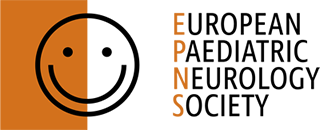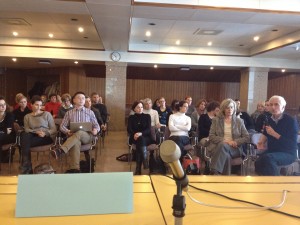Ljubljana, Slovenia, 12-13 February 2016
This interesting symposium (the first day) and workshop with case presentations (the second day) was organized jointly by Medical Faculty, University of Ljubljana, Slovenia (Postgraduate Course on Child and Developmental Neurology), Department of Child, Adolescent and Developmental Neurology, University Medical Centre Ljubljana and University Rehabilitation Institute (Paediatric Department), Ljubljana.
The first day’s venue was fin-de-siecle hotel – Grand Hotel Union in the Old City Centre of Ljubljana and there were 70 participants, mainly from Slovenia, but coming also from Turkey, Portugal, Spain and United Kingdom. The invited speaker from United Kingdom was dr. Jean-Pierre Lin, consultant paediatric neurologist in the general neurology and complex motor disorders service at Evelina Children’s Hospital, London. There were invited speakers from the region, as well: professor Vlatka Mejaski-Bosnjak from Zagreb University Hospital who has had an interesting talk on congenital citomegalovirus infection and cerebral palsy, especially dyskinetic-dystonic form, and dr. Mojca Zerjav-Tansek from University Hospital Ljubljana who presented a wonderful talk on all the neurometabolic diseases and inborn errors of metabolism which can present with early movement disorders and can have a leading symptom of dystonia, while dr. Katja Groleger-Srsen, from University Rehabilitation Institute presented different scoring systems and scales for evaluatitng spasticity and dystonia in children with cerebral palsy and other movement disorders. However the majority of participants were definitely more than saisfied with the lectures of JP Lin on impact and prognosis of dystonia in childhood where he presented the actual state of the art lecture on different aetiological types of dystonia (all supported by wonderful educational and clinical cases’ videos of childhood dystonia) and their outcome, including some of the medication as well as operational procedures. The second lecture was on a very difficult topic interesting for all Child Neurologists who are occasionally asked for opinion and consultation in different PICU units for a child being in status dystonicus. We were all aware of dr Lin’s experiences, his previous talks and many papers published on this topic, however this was a superb presentation and we all enjoyed in it so much – from recognizing so called brittle dystonia to assessing the child in such a dystonic storm, and finally the treatment – specific as well as other supportive measures, which can sometimes be even more important than only choosing the right drug.
The second day started with short presentation of the Paediatric part of the Rehabilitation University Institute in Ljubljana, followed by presentation of all the facilities which can be given to a child with severe motor and cognitive impairment to improve his and his parents’ everyday life and their overall quality of life, given by the Head of Paediatric Department, dr. Hermina Damjan. I believe that all participants were astonished by the wast possibilities of childhood rehabilitation devices which are currently available. Again there was a superb presentation by dr JP Lin on current advances in paediatric movement disorders, especially regarding the new imaging techniques to assess white mater integrity and overall condition of basal ganglia, and operational procedures, such as deep brain stimulation (thalamic and subthalamic) and intrathecal baclofen. We were also glad that we were able to present some difficult cases with dystonia (Aicardi-Goutieres, PKAN, and hemidystonia) for which we got valuable suggestions for further management from dr Lin, as well as from the vivid discussions from the auditorium. Finally we discussed further possibilities of joint research projects as well as further collaboration on the clinical grounds and hope to meet again, either in Ljubljana or in London.
Professor David Neubauer
Vivid discussions at the Lecture room at University Rehabilitation Institute Ljubljana, Slovenia.

